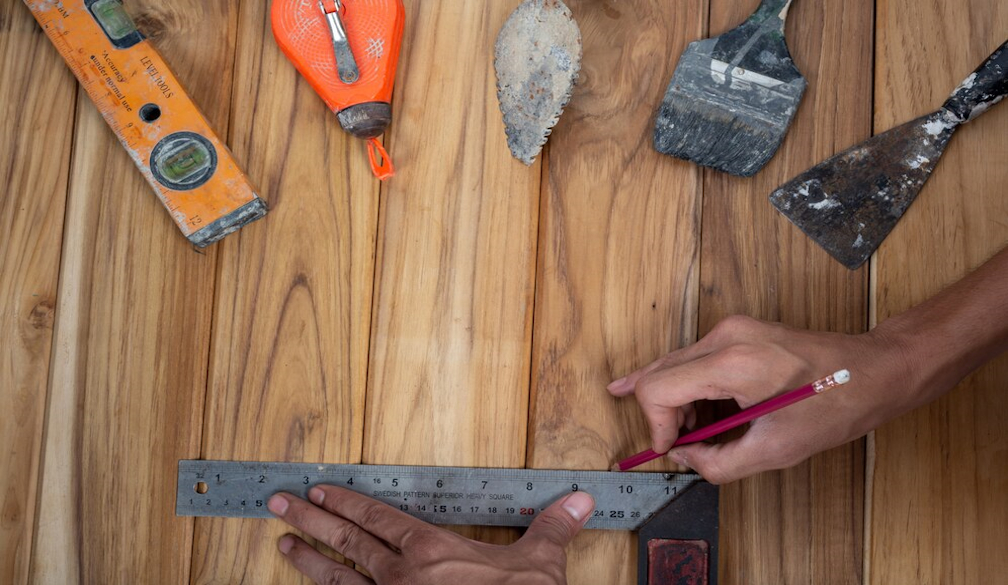How to Deal with Scratches on Timber Floors: Tips and Techniques for a Flawless Finish

Introduction
Timber floors are renowned for their beauty and timeless appeal, adding warmth and elegance to any home. However, scratches are a common issue that can detract from their appearance and charm. These imperfections, whether minor or deep, can be frustrating and diminish the floor's overall aesthetic. The goal of this article is to provide you with effective tips and techniques for dealing with scratches on timber floors, ensuring they remain flawless and beautiful.
Understanding the Types of Scratches
Scratches on timber floors can vary in depth and severity, each requiring a different approach for effective treatment. Scratches on timber floors can vary in depth and severity, each requiring a different approach for effective treatment. Hybrid Flooring Sydney can create more resistant flooring for you. Here’s a breakdown of the common types:
Surface Scratches: These are shallow and only affect the finish of the floor. They often result from minor impacts or friction from furniture and can usually be addressed with simple DIY methods.
Deep Scratches: These penetrate beyond the finish into the wood itself. They are more noticeable and require more effort to repair, often involving sanding and refinishing.
Gouges: These are the most severe, involving significant damage to the wood. Gouges are typically caused by heavy objects being dragged or dropped on the floor and may need professional repair.
Assessing the Severity
To determine the appropriate treatment, first assess the severity of the scratch:
- Shine a flashlight at an angle over the scratch. If it catches the light but doesn’t feel deep when you run your finger over it, it’s likely a surface scratch.
- Run your fingernail across the scratch. If it catches significantly, it’s likely a deep scratch or gouge.
By understanding and accurately assessing the type of scratch, you can choose the most effective repair method to restore the flawless finish of your timber floors.
Basic Repair Techniques for Minor Scratches
Using a Wood Floor Cleaner and Polish
For minor scratches, a good starting point is to clean and polish the affected area. Use a high-quality wood floor cleaner to remove dirt and grime. After cleaning, apply a wood floor polish specifically designed for your floor type. This polish helps to fill in minor scratches and restore the floor’s shine, making the scratches less noticeable.
DIY Solutions
Several simple home remedies can effectively mask minor scratches:
- Walnut: Rub the meat of a walnut over the scratch. The natural oils in the nut will darken the wood, blending the scratch with the surrounding area.
- Olive Oil: Apply a small amount of olive oil to a soft cloth and rub it into the scratch. This can help to conceal the scratch and add a bit of shine to the floor.
- Crayon: Match the color of the crayon to your floor, then rub it into the scratch. Buff the area with a soft cloth to blend the color and remove excess wax.
These basic repair techniques can quickly improve the appearance of minor scratches, helping to maintain the beauty of your timber floors.
Repairing Deeper Scratches
Wood Filler
For deeper scratches and gouges, wood filler is an effective solution. Start by cleaning the area to remove any dirt or debris. Apply the wood filler with a putty knife, pressing it into the scratch or gouge to ensure it fills completely. Smooth the surface with the knife and allow the filler to dry according to the manufacturer’s instructions. Once dry, sand the area lightly to achieve a smooth, even surface.
Sanding and Refinishing
Sanding and refinishing are necessary for deeper scratches that penetrate the wood. Begin by sanding the scratched area with fine-grit sandpaper, working with the grain of the wood. Sand until the scratch is no longer visible and the surface is smooth. Clean the area to remove dust, then apply a matching finish. This might involve staining the sanded area to match the surrounding floor color. Finish with a coat of polyurethane or a similar sealant to protect the wood and give it a uniform appearance.
Wood Stain and Sealant
To restore color and protect the repaired area, use wood stain and sealant. Select a wood stain that matches your floor's color. Apply the stain with a brush or cloth, following the grain of the wood. Wipe away any excess stain and let it dry completely. Once the stain is dry, apply a sealant to protect the wood and blend the repair seamlessly with the rest of the floor. The sealant adds a protective layer that preserves the finish and durability of your timber floors.
These techniques for repairing deeper scratches can effectively restore the beauty and integrity of your timber floors, ensuring they remain a stunning feature of your home.
Preventive Measures to Protect Timber Floors
Furniture Pads and Rugs
To protect your timber floors from future scratches, use furniture pads and dome caps. Attach felt pads to the legs of chairs, tables, and other furniture to prevent them from scratching the floor when moved. Place area rugs in high-traffic areas, such as hallways and living rooms, to add an extra layer of protection. Rugs not only reduce wear and tear but also enhance the aesthetic appeal of your space.
Regular Maintenance
Regular cleaning and maintenance are crucial for keeping your timber floors in top condition. Sweep or vacuum regularly to remove dirt and debris that can cause scratches. Use a damp mop with a wood-friendly cleaner to maintain the floor's shine and prevent the buildup of grime. Regularly inspect your floors for signs of wear and address minor issues before they become major problems.
Proper Footwear
To minimize the risk of scratches, avoid wearing high heels or shoes with hard soles indoors. These can cause significant damage to timber floors. Instead, opt for soft-soled shoes or go barefoot inside your home. Encouraging family members and guests to remove their shoes at the door can greatly reduce the likelihood of floor damage.
Implementing these preventive measures will help maintain the beauty and longevity of your timber floors, ensuring they remain a stunning feature in your home for years to come.
Conclusion
Timely repair and consistent maintenance are crucial to preserving the elegance and longevity of your timber floors. By addressing scratches promptly and adopting good habits, you can ensure your floors remain flawless and attractive.
We encourage you to try these techniques and, when necessary, seek professional assistance to keep your timber floors in pristine condition. With the right care, your floors can continue to enhance the beauty of your home for years to come.












